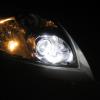Wet Seats, Need Help Quick...
Announcements
-
Similar Content
-
Latest Posts
-
By DraftySquash · Posted
and I thought size mattered 😝 At this point I may either pray to the Afterpay gods and get a torque wrench or attach a water bucket to the breaker bar. I appreciate the help though 🙏🏾 -
Or get a guy in his early fiftys to do it. A single good "oof" and about two cracks from his lower back is about the right tightness...
-
It's impossible to convey what it will feel like to get the right torque. But you can develop a feel for it. A 900mm breaker bar is.....f**king huge. I only use a normal ~400mm one. But with 900mm being very nearly a metre, and the right torque being in the order of 100Nm, then you're going to need a bit over 100N of force, which is about 10 kg. So if you practice using the bar pulling up, instead of pushing down, then it will be about the same effort as lifting a 10kg bucket of water. That's what the pressure against your fingers should feel like. Ish. If you use a more typical length breaker, then it's about twice that. So a good 20 litre bucket, or a little bit more.
-
By DraftySquash · Posted
Also, if anyone has a torque wrench around Williams Landing area and can lend it to me for like 5 mins - I got 4 bottles of Furphy left and I’ll throw that in with a Happy meal 😂 -
By DraftySquash · Posted
So today I decided to bleed my brake fluid, which meant to the wheels came off the car at my garage for the first time. I only had a 90cm breaker bar with me and I noticed that some 1 or 2 lug nuts were a bit hard to get loose (from when the shop did the coilovers) Now.... when it came to putting them back on, I didn't want to put all my weight and overtighten them. So I hand tightened as much as possible and then put normal pressure on the edge of the breaker bar and tightened it until I couldn't turn it anymore without putting in an effort. Do you think that is tight enough? Or is that still too tight? They are tighter than finger tight. Last thing I want is to have them strip or warp sh*t. But hard times mean I can't just go down to Supercheap and get a torque wrench 🥺
-





Recommended Posts
Create an account or sign in to comment
You need to be a member in order to leave a comment
Create an account
Sign up for a new account in our community. It's easy!
Register a new accountSign in
Already have an account? Sign in here.
Sign In Now